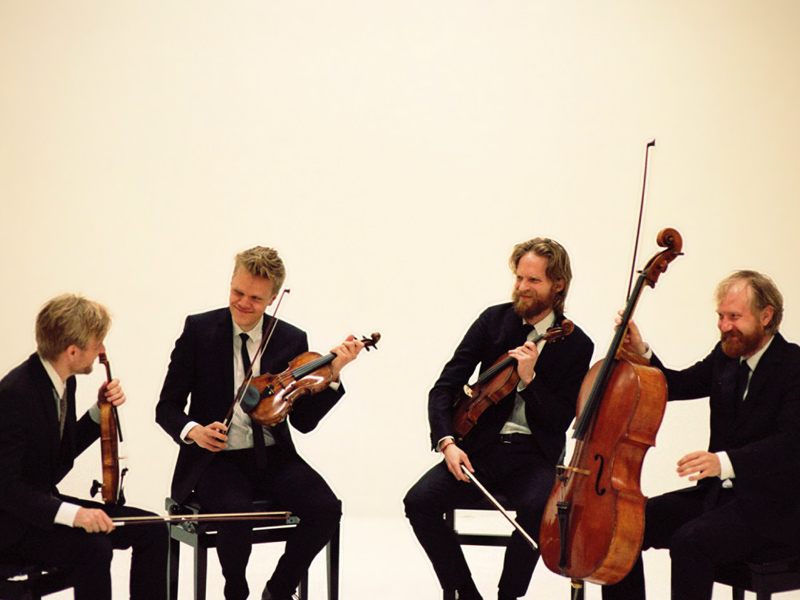The Danish String Quartet are making a return visit to the Lammermuir Festival after five years. In that time they have become one of the leading string quartets in the world, and there is a full audience to hear them tonight in the artistic Arts and Crafts, Chalmers Memorial Church in Port Seton. The concert consists of Bach, Mendelssohn and Beethoven, and the viola player, Asbjørn Nørgaard, introduces the concert by talking about the connections between Bach and Beethoven, how Beethoven uses a theme from Bach in his quartet, and how they both influenced Mendelssohn.
The concert begins with a very spirited rendition of Bach’s Fugue No 16 in G minor from the Well-tempered Clavier, arranged for string quartet. The Well-tempered Clavier was originally designed by Bach to act as a teaching aid for young musicians but is full of wonderful music, and as Nørgaard points out, has been very influential with other composers.
The concert then flows seamlessly into Mendelssohn’s String Quartet No. 2, composed when he was, amazingly, only eighteen and still a student! This is a beautiful work, and the opening is based partly on a love song that Mendelssohn wrote at the time, Ist es Wahr? (Is it true?)—well he was eighteen! The later parts of the quartet are heavily influenced by both Bach (in the slow movement), and Beethoven (in the scherzo and the finale). It is doubtful it has ever been played better than it is being played tonight. The concentration and cooperation of the quartet, and their power and precision, shows what getting on for twenty years of working together can produce.
After the interval, the concert continues with Beethoven’s String Quartet Op. 132 in A minor. It is what Nørgaard calls “one of Beethoven’s crazy quartets”, meaning this is one the late quartets which musicians find challenging! Interestingly, the quartet swap leaders after the interval, the first and second violins changing places: maybe this is a way of maintaining harmony in a quartet. According to Festival co-director Hugh Macdonald’s excellent programme notes, the work may have inspired T S Eliot to write his “Four Quartets” because, as he said, “there is human gaiety after immense suffering”. Beethoven dedicated the third movement to God in gratitude for his delivery from a severe illness, and by this time he was almost entirely deaf.
Whatever the inspiration, it is a great work, and is superbly played by the Danish Quartet, and yes we do recognise the reference to Bach in the first movement, and indeed in the last movement, references to his ninth symphony. It is rapturously received by the audience, and the Quartet reward us with an encore: a lovely song by Carl Nielsen. As the leader says, “after the great Bach, Beethoven and Mendelssohn, we have the great Nielsen”. Nielsen is, of course, Denmark’s leading composer, and it is a fitting ending by Denmark’s, and indeed one Europe’s, finest quartets. It is also another triumph for the Lammermuir Festival, which is maintaining a very high standard of musicianship this year.
